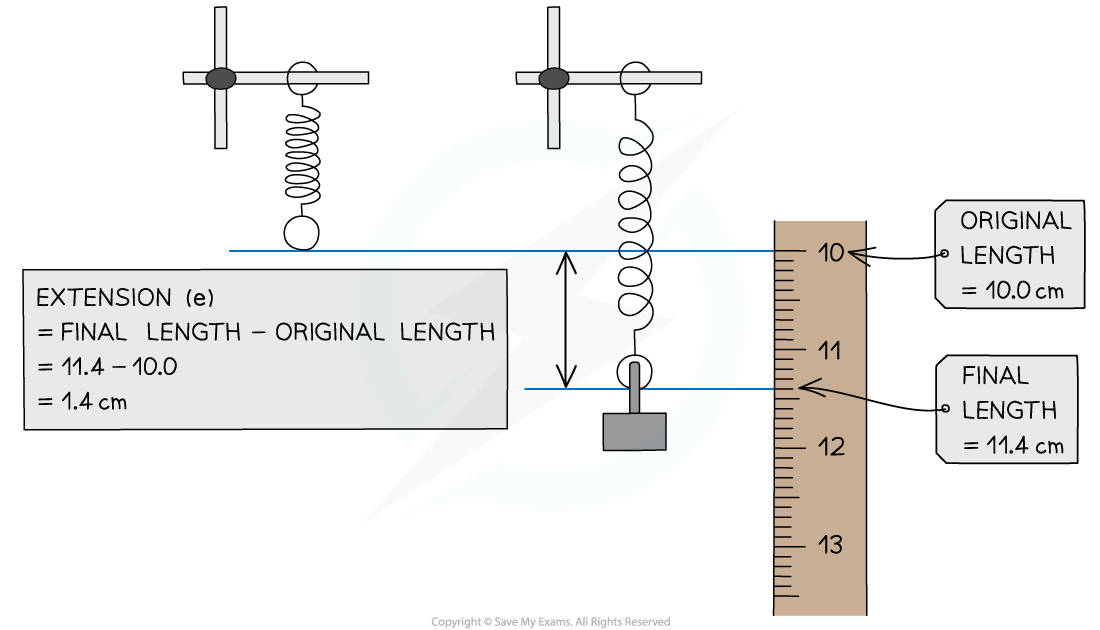Elastic Potential Energy (AQA GCSE Physics) : Revision Note
Elastic Potential Energy
What is Elastic Potential Energy?
Energy in the elastic potential store of an object is defined as:
The energy stored in an elastic object when work is done on the object
This means that any object that can change shape by stretching, bending or compressing (eg. springs, rubber bands)
When a spring is stretched (or compressed), work is done on the spring which results in energy being transferred to the elastic potential store of the spring
When the spring is released, energy is transferred away from its elastic potential store

How to determine the extension, e, of a stretched spring
How to Calculate Elastic Potential Energy
The amount of elastic potential energy stored in a stretched spring can be calculated using the equation:
Ee = ½ × k × e2
Where:
Ee = elastic potential energy in joules (J)
k = spring constant in newtons per metre (N/m)
e = extension in metres (m)
The above elastic potential energy equation assumes that the spring has not been stretched beyond its limit of proportionality

The spring on the right has been stretched beyond the limit of proportionality
Worked Example
A mass is attached to the bottom of a hanging spring with a spring constant of 250 N/m. It stretches from 10.0 cm to 11.4 cm.
Calculate the elastic energy stored by the stretched spring.
Answer:
Step 1: Determine the extension of the spring

Step 2: List the known quantities
Spring constant, k = 250 N/m
Extension, e = 1.4 cm = 0.014 m
Step 3: Write out the elastic potential energy equation
Ee = ½ ke2
Step 4: Calculate the elastic potential energy
Ee = ½ × 250 × (0.014)2
Ee= 0.0245 J
Step 5: Round the answer to 2 significant figures
Ee = 0.025 J
Examiner Tips and Tricks
Look out for units! If the question gives you units of cm for the length you MUST convert this into metres for the calculation to be correct.
To change the shape of an object, two contact forces must be acting on the object in different directions. In this case, the spring is attached to the arm of the clamp providing a contact force, and the mass is attached to the spring providing a contact force. These forces pull the spring in opposite directions and this is the reason that the spring stretches. The forces and energy topics are linked by the concept of work done which is a force acting over a distance, and also the energy transferred. Making links between concepts is an important way to fast-track your understanding.

You've read 0 of your 5 free revision notes this week
Sign up now. It’s free!
Did this page help you?
